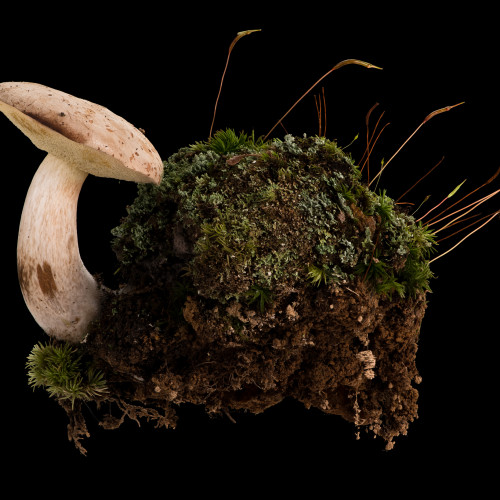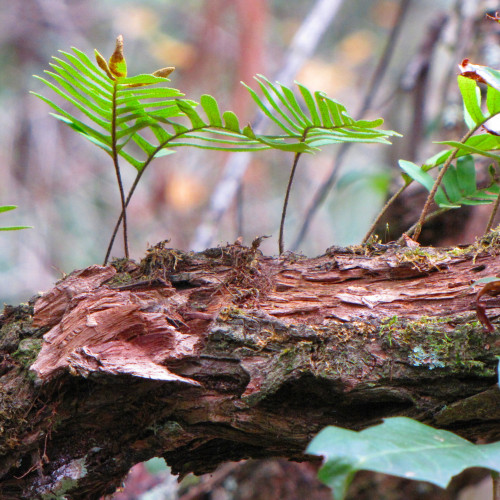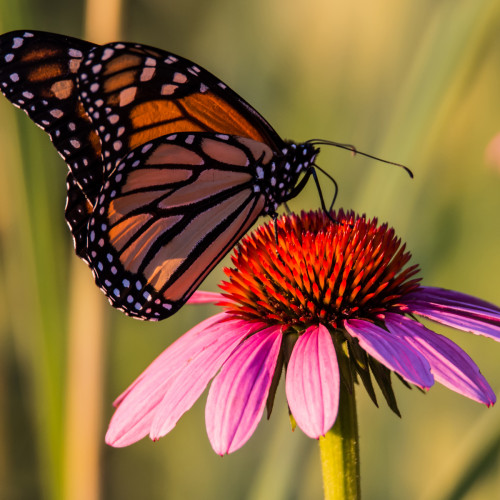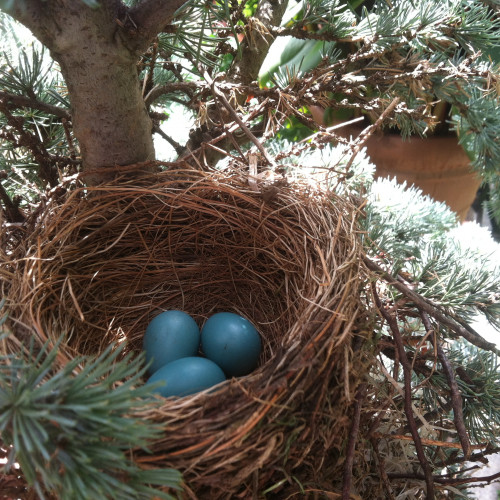The Wood Wide Web
Just like we use the internet to communicate with each other and order supplies, trees and other plants have their own network: fungi. Underground fungal threads known as mycelium connect the roots of plants, allowing them to share nutrients and communicate through chemical signals. Scientists refer to this network as “the Wood Wide Web.”
The next time you see a mushroom in the woods, think about what’s happening underground.
The World’s Largest Living Organism
Fungi can cover huge areas. The world’s largest living organism is believed to be a honey fungus in the Blue Mountains of Oregon covering three square miles—more than a dozen times the size of the National Mall. Known as “the Humongous Fungus,” it is thought to be thousands of years old.

Honey Fungus
Photograph by Aleksander
A Give-and-Take Relationship
Fungi have a long-standing symbiotic relationship with plants that dates back millions of years. Plants provide fungi with sugars from photosynthesis. In exchange, fungi provide plants with water and nutrients from the soil, such as phosphorus and nitrogen.

Boletus species
Carolyn Thome, photographer
La Wood Wide Web
Al igual que usamos Internet para comunicarnos entre nosotros y pedir suministros, los árboles y otras plantas tienen su propia red: los hongos. Los filamentos subterráneos de los hongos conocidos como micelio conectan las raíces de las plantas, lo que les permite compartir nutrientes y comunicarse a través de señales químicas. Los científicos se refieren a esta red como “la Wood Wide Web”.
La próxima vez que vea un hongo en el bosque, piense en lo que está pasando bajo tierra.
El organismo vivo más grande del mundo
Los hongos pueden cubrir áreas enormes. Se cree que el organismo vivo más grande del mundo es un hongo de miel en las Montañas Azules de Oregón que cubre tres millas cuadradas (7.8 kilómetros cuadrados), más de 12 veces el tamaño del National Mall. Conocido como “el hongo gigante”, se cree que tiene miles de años.

Honey Fungus
Fotografía de Aleksander
Una relación de reciprocidad
Los hongos tienen una prolongada relación simbiótica con las plantas que data de hace millones de años. Las plantas les proporcionan a los hongos azúcares de la fotosíntesis. A cambio, los hongos les proporcionan a las plantas agua y nutrientes del suelo, como fósforo y nitrógeno.

Boletus species
Carolyn Thome, fotógrafa












